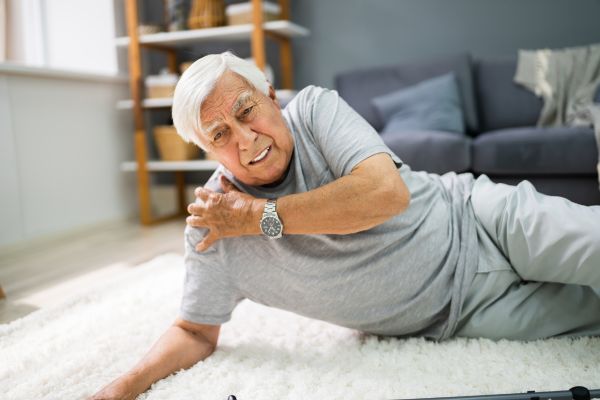Heating Pad Dangers: What You Need to Know
In a world where comfort is king, heating pads have become a go-to remedy for sore muscles, menstrual cramps, and even the occasional cold feet. But, while these handy devices can offer much-needed relief, they’re not without their risks. In fact, the dangers of heating pads are often overlooked, leaving users vulnerable to a range of potential hazards. So, what exactly are the dangers of heating pads, and how can you use them safely?
The Appeal of Heating Pads
Heating pads are popular for good reason—they’re convenient, easy to use, and provide almost instant relief from pain and discomfort. Whether you’re dealing with chronic back pain or just need something to ease the tension in your neck after a long day, a heating pad can feel like a godsend. However, as with any form of treatment, there’s a fine line between benefit and harm.
Heating Pad Dangers: The Risks You Can’t Ignore
While heating pads may seem harmless, they can actually cause significant harm if not used properly. Here’s a closer look at the potential dangers:
- Burns and Skin Irritation
- Direct Contact Burns: One of the most common dangers associated with heating pads is burns. Prolonged exposure to high temperatures can lead to first-degree burns, characterized by redness, pain, and swelling. In more severe cases, second-degree burns can occur, resulting in blisters and intense pain.
- Skin Irritation: For individuals with sensitive skin, even lower heat settings can cause irritation. This is especially true if the heating pad is used without a protective cover or if it’s left on the skin for too long.
- Electrical Hazards
- Fire Risk: Heating pads are electrical devices, and like all electrical appliances, they come with a risk of fire. Faulty wiring, a damaged cord, or even just leaving the pad on for too long can lead to a dangerous situation.
- Electrical Shock: There’s also the risk of electrical shock, particularly if the heating pad comes into contact with water. This makes it crucial to keep the device dry and to avoid using it in damp environments.
- Interference with Circulation
- Reduced Blood Flow: When used excessively or at high temperatures, heating pads can actually reduce blood flow to the area, exacerbating the very pain they’re meant to relieve. This is particularly concerning for individuals with poor circulation or conditions like diabetes.
- Dependency and Misuse
- Overuse: Relying too heavily on a heating pad can lead to dependency, where users feel they can’t get through the day without it. This can prevent individuals from seeking more effective, long-term solutions to their pain.
- Inappropriate Use: Heating pads are often misused for conditions that they’re not suitable for, such as deep tissue injuries or inflammatory conditions like arthritis. Applying heat in these cases can worsen symptoms and delay recovery.
- Risks for Vulnerable Populations
- Elderly and Children: Elderly individuals and children are particularly vulnerable to heating pad dangers. Their skin is often more sensitive, and they may not be able to feel when the pad is too hot, leading to burns.
- Pregnant Women: While many pregnant women use heating pads to alleviate back pain, there’s a risk of overheating, which can be harmful to the fetus. It’s essential for pregnant women to use heating pads with caution and under medical advice.
Safe Use Guidelines for Heating Pads
Despite the risks, heating pads can still be a valuable tool for pain relief when used correctly. Here are some tips to ensure you’re using your heating pad safely:
- Follow Manufacturer’s Instructions: Always read and follow the manufacturer’s guidelines for use. This includes adhering to recommended heat settings and time limits.
- Use a Protective Barrier: Never place a heating pad directly on your skin. Use a cloth or towel as a barrier to prevent burns and irritation.
- Limit Use Time: Avoid using the heating pad for more than 20 minutes at a time. Prolonged use increases the risk of burns and can reduce blood flow to the affected area.
- Check for Damages: Regularly inspect your heating pad for any signs of wear and tear, such as frayed cords or exposed wires. Replace the pad immediately if you notice any damage.
- Avoid Sleeping with a Heating Pad: Falling asleep with a heating pad on increases the risk of burns and fire. If you need heat therapy overnight, consider using a pad with an automatic shut-off feature.
- Keep It Dry: Ensure that your heating pad stays dry at all times. Do not use it in a damp environment, and avoid contact with water.
FAQs About Heating Pad Dangers
- Can heating pads cause cancer?
- There’s no evidence to suggest that using a heating pad can cause cancer. However, excessive heat exposure can cause burns and skin damage, so it’s important to use heating pads safely.
- Is it safe to use a heating pad every day?
- Using a heating pad daily is generally safe if you follow the manufacturer’s guidelines. However, prolonged use can lead to dependency and may prevent you from seeking more effective treatments for your pain.
- What should I do if I get burned by a heating pad?
- If you experience a burn from a heating pad, immediately remove the source of heat and cool the area with cold water. For severe burns, seek medical attention as soon as possible.
- Can pregnant women use heating pads?
- Pregnant women can use heating pads, but they should do so with caution. It’s important to avoid high temperatures and limit use to short periods to prevent overheating.
- Are there alternatives to heating pads?
- Yes, there are alternatives to heating pads, such as warm baths, heat wraps, and topical heat creams. These options may provide similar relief with less risk of burns or other hazards.
Conclusion
Heating pads can be a great way to soothe aches and pains, but they’re not without their risks. From burns and skin irritation to more serious concerns like electrical hazards and circulation issues, it’s clear that heating pad dangers should not be taken lightly. By following safe use guidelines and being aware of the risks, you can enjoy the benefits of heat therapy without the drawbacks.
When in doubt, consult with a healthcare professional to determine the best treatment for your needs and to ensure that you’re using heating pads safely.
Authoritative Links for Further Reading:



